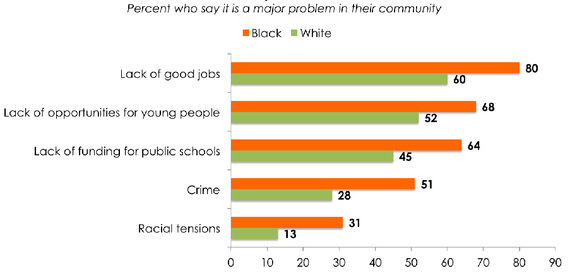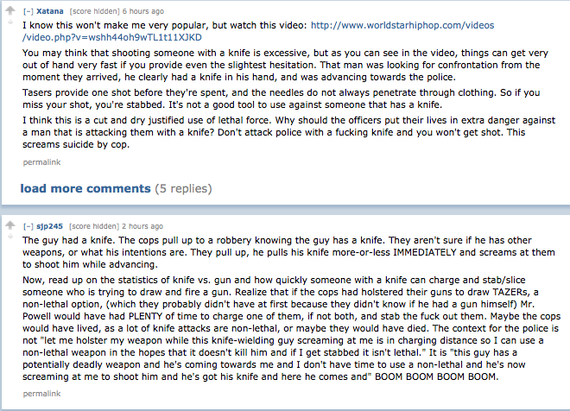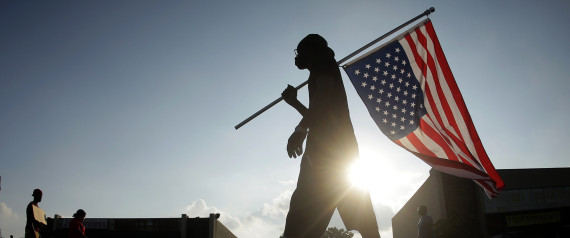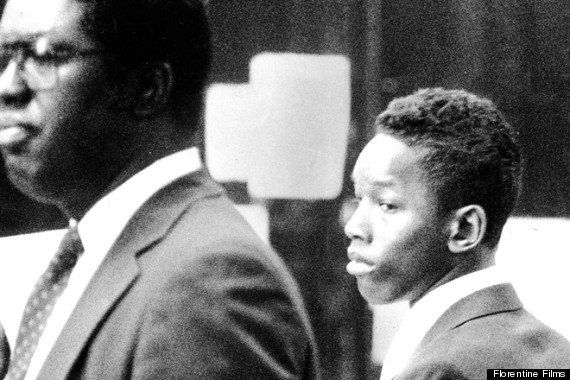A lot has been said about the recent events in Ferguson. It’s all-too-clear we’re dealing with a significant event in America’s history, and perhaps a trigger that could kick-start a new anti-racism movement.
Finally, residents in Ferguson, Mo., this morning are waking up to a violence-free night, 13 days after the shooting death of Michael Brown sparked days and nights of demonstrations and rage.

The shooting of unarmed black teenager Michael Brown by a white police officer in Ferguson, Missouri, and the anger poured out in response by Ferguson’s mostly black population…

The police officers who shot and killed Kajieme Powell, 25, in St. Louis, Missouri, on Tuesday did so while being recorded by a man with a cell phone camera.
On Wednesday, amid continued protests demanding “Justice for Michael Brown” prosecutors will bring evidence before a grand jury as they determine whether to indict Brown’s killer, Officer Darren Wilson. The power to indict rests with local prosecutors and pliant grand juries, and as Jonathan Cohn has pointed out, a prosecutor will usually refrain from indicting altogether if the accused faces a low likelihood of conviction. In this case, a combination of entrenched racial and occupational biases, and most importantly the details of Missouri law, all but ensures that a conviction is off the table.
The fatal shooting of unarmed teenager Michael Brown hardly occurred in a vacuum. It hit television and Twitter just weeks after the death of Eric Garner at the hands of the NYPD…
The past week’s unfolding tragedy in Ferguson, Missouri, with its militarized and overwhelmingly white police force confronting angry and hopeless African-Americans…

The killing of an unarmed teenager, Michael Brown, by a police officer, Darren Wilson, and the protests that have followed have brought about calls for the much-ballyhooed — or bemoaned, depending on your perspective — conversation about race.

I remember the stunned reaction of so many Americans back in the summer of 2005 when legions of poor black people in desperate circumstances seemed to have suddenly and inexplicably materialized in New Orleans during the flooding that followed Hurricane Katrina.
Racial Profiling: “Crisis Of Distrust: Police And Community In Toronto” (available via YouTube)
With focus on Toronto, this 30-minute documentary deals with the process of carding, a form of racial profiling in which citizens are randomly stopped and asked for identification. This is a very specific example of a much larger problem that rears its head in a variety of forms, but “Crisis Of Distrust” makes for an effective case study of the underlying racism at play.
Police Brutality:“No Justice, No Peace” (available via YouTube)
“No Justice, No Peace” takes on the reality of police brutality in California. Through disturbing case studies and such daunting statistics as the fact that, according to the Bureau of Justice Statistics, “an average of 400 – 500 innocent people are murdered by law officers in the United States every year,” Liberation News peels back the racial reality which underlies such violent iterations of law enforcement.
Police Accountability (Or Lack There Of): “These Streets Are Watching” (available via YouTube)
Through the communities of Berkeley, Denver and Cinncinati, this Copwatch documentary deals in organized action against police misconduct. Director Jacob Crawford focuses on the lack of accountability for local law enforcement and attempts to lay down a guide for how to handle police predicaments. The images provided here make for a frustrating look at the human rights issues at play.
Racism In The Media: “The Modern Racist Paradigm”(available via YouTube)
“The Modern Racist Paradigm” deals in the institutionalization of racism as it is normalized through white media. It is myopic to talk about “the media” as a conglomerate with an organized agenda. Although these trends (i.e. the way white people “commit crimes” and black people are “criminals”) are undeniable and play a major role in shifting national perception.
Impact Of The Media On The Justice System: “The Central Park Five”(available via Netflix)
This film from our original set of documentaries to watch on Netflix tracks the direct effect of the media on public perception and, more troublingly, the criminal justice system. The story follows five boys who were wrongfully convicted as a result of mass hysteria surrounding the 1989 rape of a jogger in Central Park.

Racism In Communities: “Shenandoah” (available via Netflix)
Featured on our second set of documentaries to stream on Netflix, “Shenandoah” is a disturbing example of the mob mentality present in many towns across America. The narrative tracks the murder of a Mexican immigrant in order to reveal the reality of American life for those who fall far from the top of the presiding social hierarchy in the closed system of a place which is much smaller than but not wholly unlike Ferguson, Missouri.

Racism In General: “Racism: A History”(available via YouTube)
Should you need to step back to understand the very beginnings of institutionalized racism, “Racism: A History” is the closest you will get to a Racism 101 class available for streaming. Created for the 200th anniversary of the abolition of slavery, this BBC documentary begins with the creation of race and the way black people were used as “items for trade.” It focuses on how that economic system created a reality where (as one of the film’s experts, history professor James Walvin, put it) “black inferiority [is] built into fundamental cultural values.”

Because of the priceless witness of reporters like Ryan Reilly and Wesley Lowery — and, most recently, Chris Hayes — one comments warily about the events in Ferguson, Missouri…

Heard about the 6-year-old girl who was cuffed and arrested? Or the 9-year-old hauled off to jail? Just guess what they had in common.














